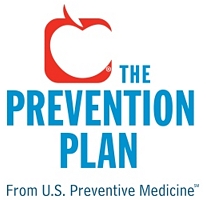 ‘Tis the season…perhaps, era…for scenario planning in health. The activity consumes a lot of my consulting time these days for stakeholders falling under the broad umbrella of “health.” With the news that Sam’s Club will offer health care for $99 out-of-consumers’ pockets, it got me wondering…where might Walmart be in the health care ecosystem in a few years, say 2015?
‘Tis the season…perhaps, era…for scenario planning in health. The activity consumes a lot of my consulting time these days for stakeholders falling under the broad umbrella of “health.” With the news that Sam’s Club will offer health care for $99 out-of-consumers’ pockets, it got me wondering…where might Walmart be in the health care ecosystem in a few years, say 2015?
Sam’s Club launched The Prevention Plan in January 2010, with a partner, U.S. Preventive Medicine. The “Plan” isn’t a health plan, per se; it’s a year-long subscription that gets the user some coaching for managing health risks. Step 1 is a blood test for cholesterol (Total, HDL, LDL, Triglycerides, HDL/LDL Ratio, Cholesterol/HDL Ratio), calculated blood glucose and Hemoglobin A1c (diabetes), along with testing for bone density, diabetes, kidney, liver, and thyroid issues.
The Plan includes two online or telephonic coaching sessions with nurses. The program employs 65 full time nurses that staff a call center available to users 24/7. There are no face-to-face meet-ups with physicians, although the program has 100 part-time physician affiliates.
Coaching advice would include following up with recommended prevention screenings based on age, gender and risks. Data generated from the test and recommendations will be recorded in a “Confidential Personal Health Record to store and manage your private health information,” according to Sam’s Club’s website.
The $99 price tag is a deep discount from U.S. Preventive Medicine’s usual fee of $229. The Plan will be sold both on Sam’s Club’s website online now, as well as through Club stores beginning in May 2011.
Health Populi’s Hot Points: Let’s be clear: The Prevention Plan isn’t health insurance, it’s not a medical home, and no doctors will lay hands on patients (at this first version of the Plan, anyway). But the Prevention Plan can be a valuable service for one aspect of health and wellness: self-monitoring and the start of consumer health engagement. That’s just a starting point, though. It’s continuity-of-care in a closed loop system with medical professionals and ongoing health data tracking and advice that ultimately drives positive health outcomes and bends that stubborn cost curve. The data from health tracking should be continuous and digital, allowing health consumers to track inputs and outcomes. One blood test and two coaching sessions do not a continuous health system make — even with 20+ online health information links. We know that just providing information without ongoing support and “nudging” does not drive full-on health engagement.
Still, in the continuing retail-ization of U.S. health care, Sam’s Club and the larger Walmart organization play a growing and sustaining role in health care. By 2015, the Affordable Care Act will have been implemented in the market for a year. More Americans will have access to health insurance. Walmart will undoubtedly be playing an even larger role on-the-street for mainstream America. The Affordable Care Act is about access, and that’s what Walmart and its community storefronts can bring to the table. If the organization invests in expanding its health information infrastructure so they join the interoperable health information network in their communities, then we’re talking about a potential role as a retail health node in accountable care.




 I'm in amazing company here with other #digitalhealth innovators, thinkers and doers. Thank you to Cristian Cortez Fernandez and Zallud for this recognition; I'm grateful.
I'm in amazing company here with other #digitalhealth innovators, thinkers and doers. Thank you to Cristian Cortez Fernandez and Zallud for this recognition; I'm grateful. Jane was named as a member of the AHIP 2024 Advisory Board, joining some valued colleagues to prepare for the challenges and opportunities facing health plans, systems, and other industry stakeholders.
Jane was named as a member of the AHIP 2024 Advisory Board, joining some valued colleagues to prepare for the challenges and opportunities facing health plans, systems, and other industry stakeholders.  Join Jane at AHIP's annual meeting in Las Vegas: I'll be speaking, moderating a panel, and providing thought leadership on health consumers and bolstering equity, empowerment, and self-care.
Join Jane at AHIP's annual meeting in Las Vegas: I'll be speaking, moderating a panel, and providing thought leadership on health consumers and bolstering equity, empowerment, and self-care.